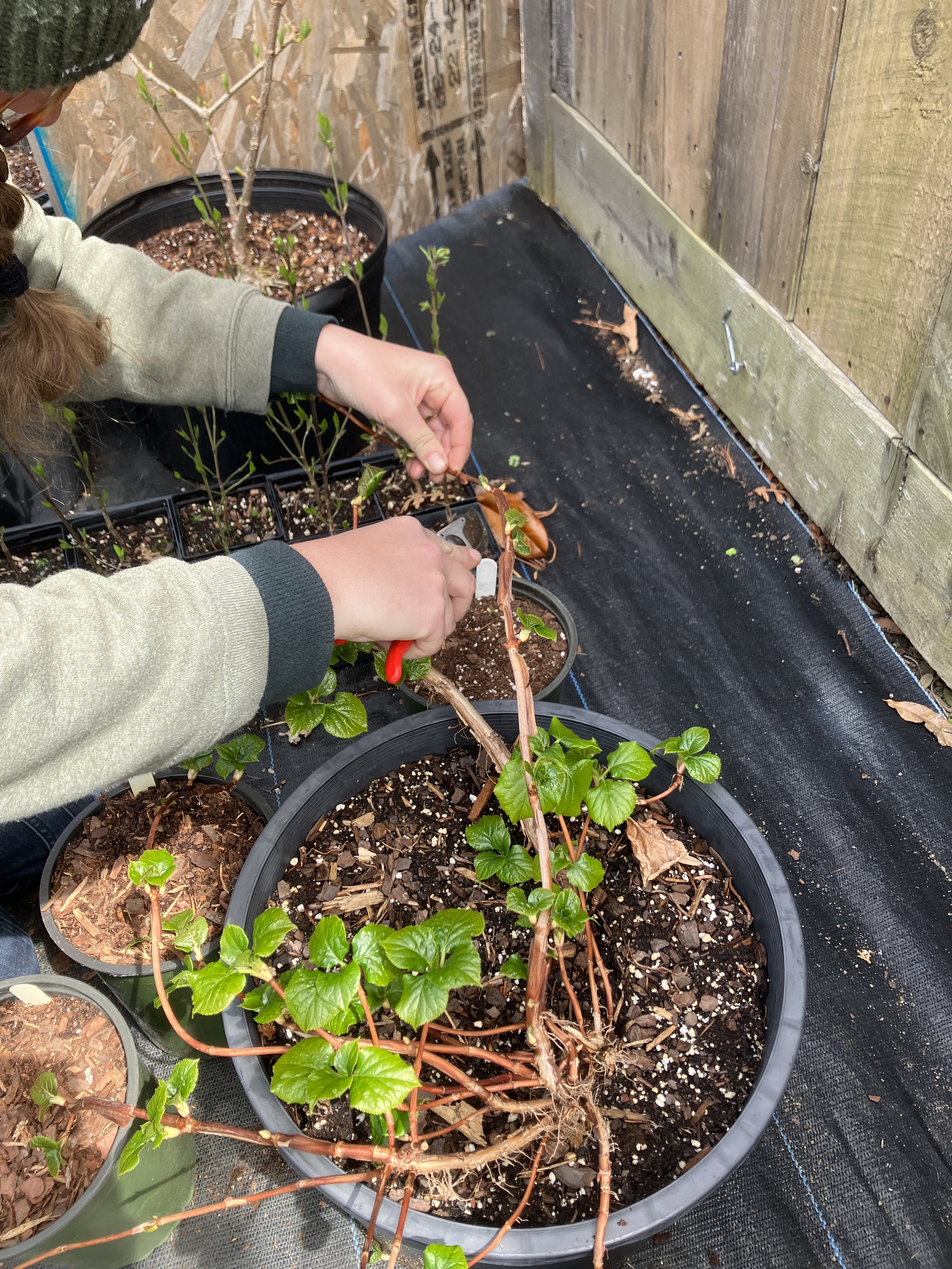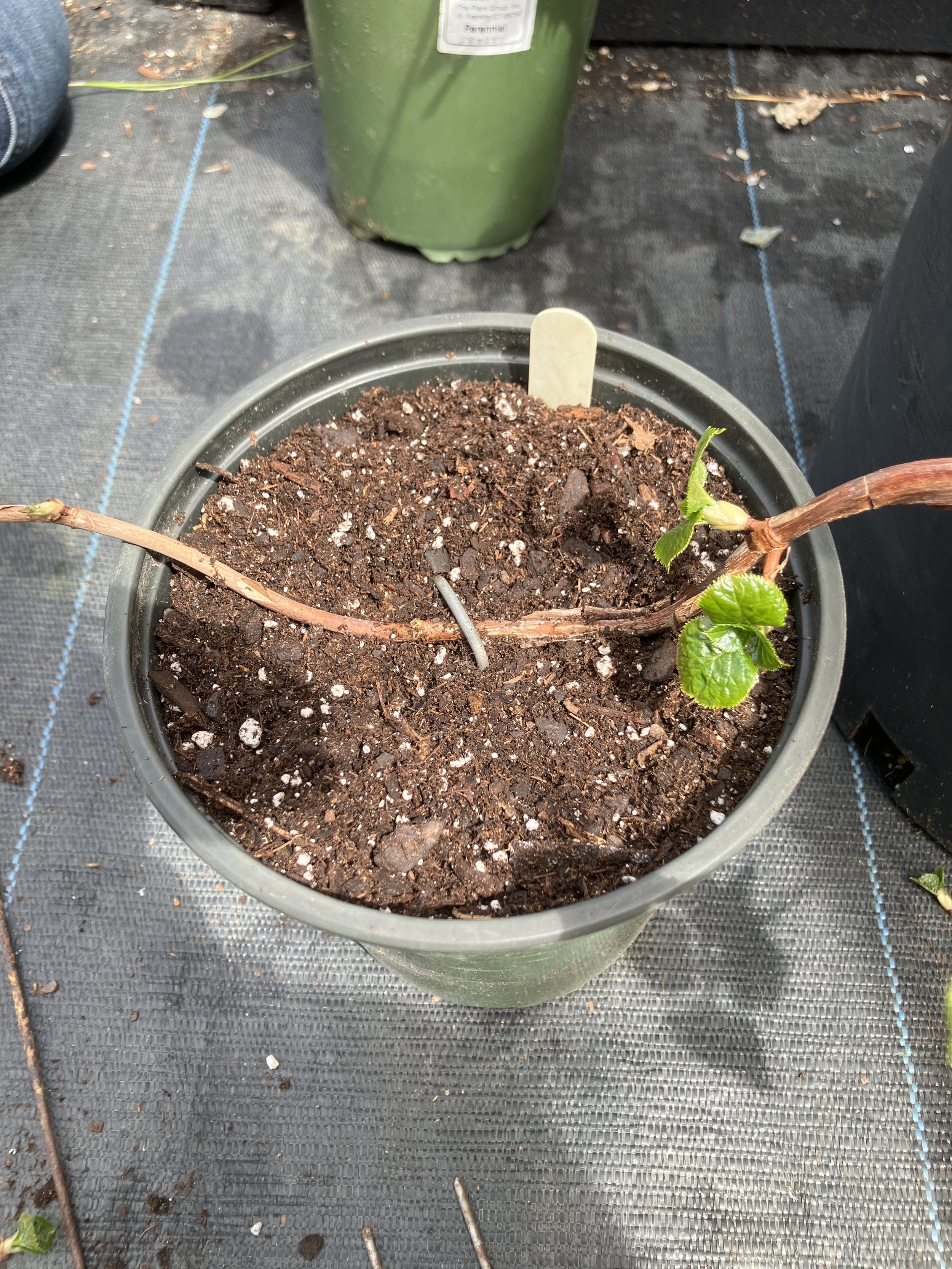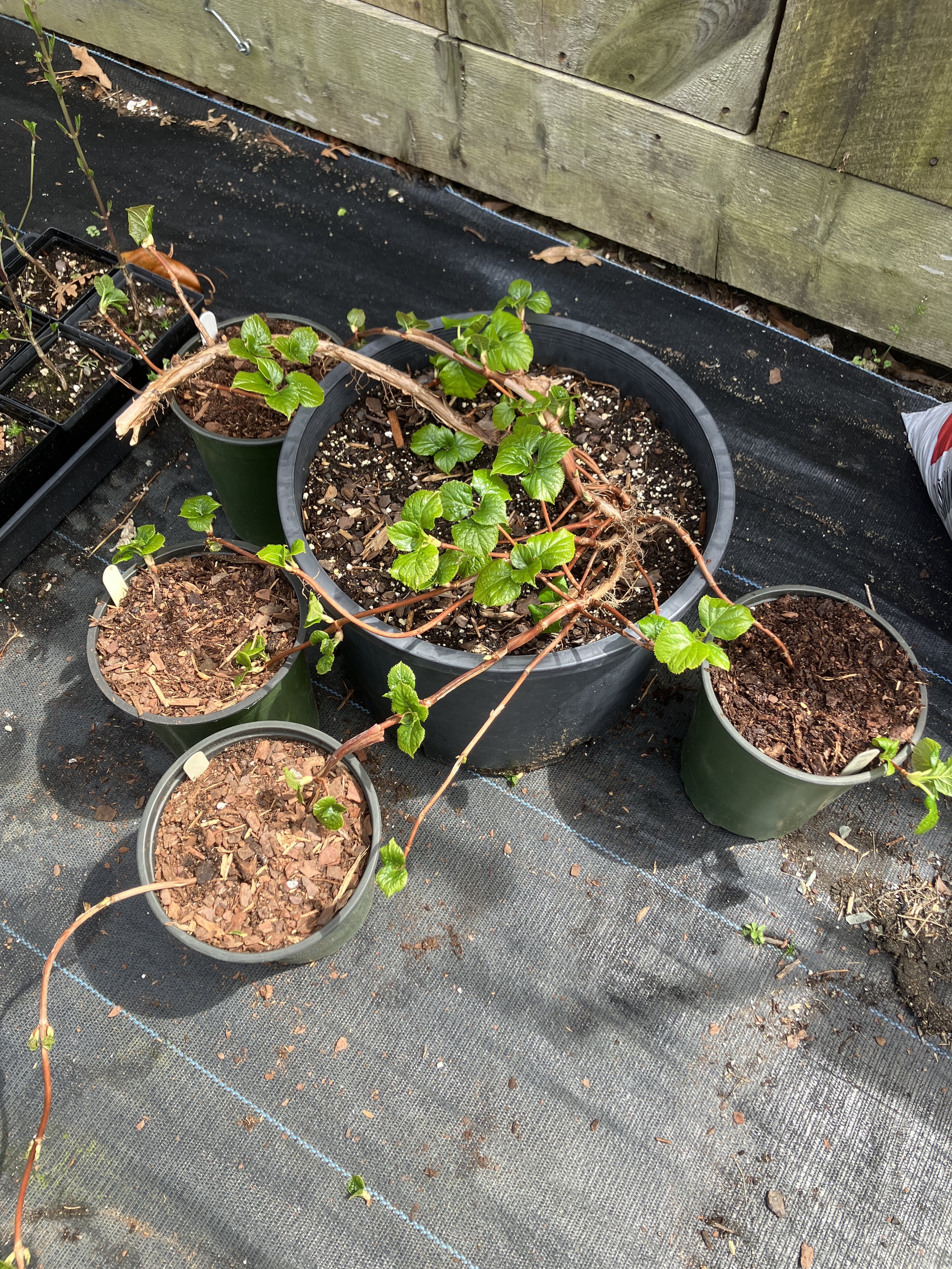Climbing Hydrangea layering propagation
Among the flurry of Spring activity at the Heritage Tree Center, we are taking a moment to test a propagation technique on one of our woody plant stock. The climbing hydrangea (Hydrangea anomala subsp. petiolaris) originates from the woodlands of eastern Asia and is now a staple in many New England gardens where, with a little shade, the vine becomes robust and a grand bloomer. The fragrant flowers can be expected from late May into June, and while they prefer to bloom on the vertical growth of vines up trees or, more classically, on brick buildings, the plant can also be used in mounding or ground cover plantings.
The method of propagation we are trying for this plant is simple layering. The idea is to promote root growth on a branch of the plant while having it still attached to the original plant, utilizing its energy to improve rooting success rate. While we are perpetuating this growth habit in a controlled environment, it can often be seen in nature with some notable occurrences being visible throughout Newport. In the photo below, a Fernleaf Beech (Fagus sylvatica ‘Asplenifolia’) at Bellevue House exhibits a textbook example of independent growth after the mother plant’s branches dipped to touch the soil, producing a whole new tree that can, and does, exist independently. For our propagation purposes we are using the flexible vining nature of the climbing hydrangea to our advantage to replicate this effect.
*Fernleaf Beech (Fagus sylvatica ‘Asplenifolia’) at Bellevue House
To begin, suitably long vining branches are chosen that are ideally also on the thicker side of growth. Using a sharp and sanitized tool, the growth from the oppositely arranged nodes is removed and two small scores are placed on either side of those nodes. This disturbance of the plant's growth will send signals that additional growth and repair will be needed at this part of the plant and will encourage the growth of roots. This section of the vine is then placed on the top of the soil and secured with a staple, covered with about a half inch of soil, and topped off with a layer of mulch to help maintain an even moisture level. With a thorough initial watering, maintenance of a consistent moisture level, and time, the roots will set and we will be able to cut the branch from the mother plant and end up with four more plants to add to our offerings at the The Heritage Tree Center.
April, 2024





